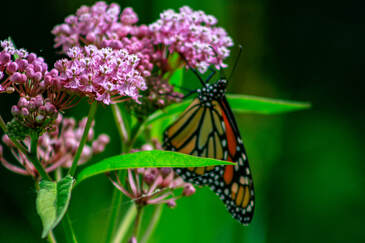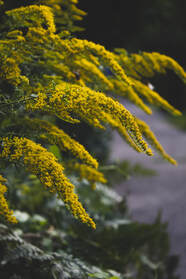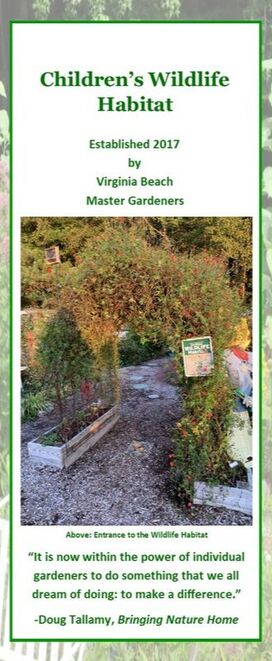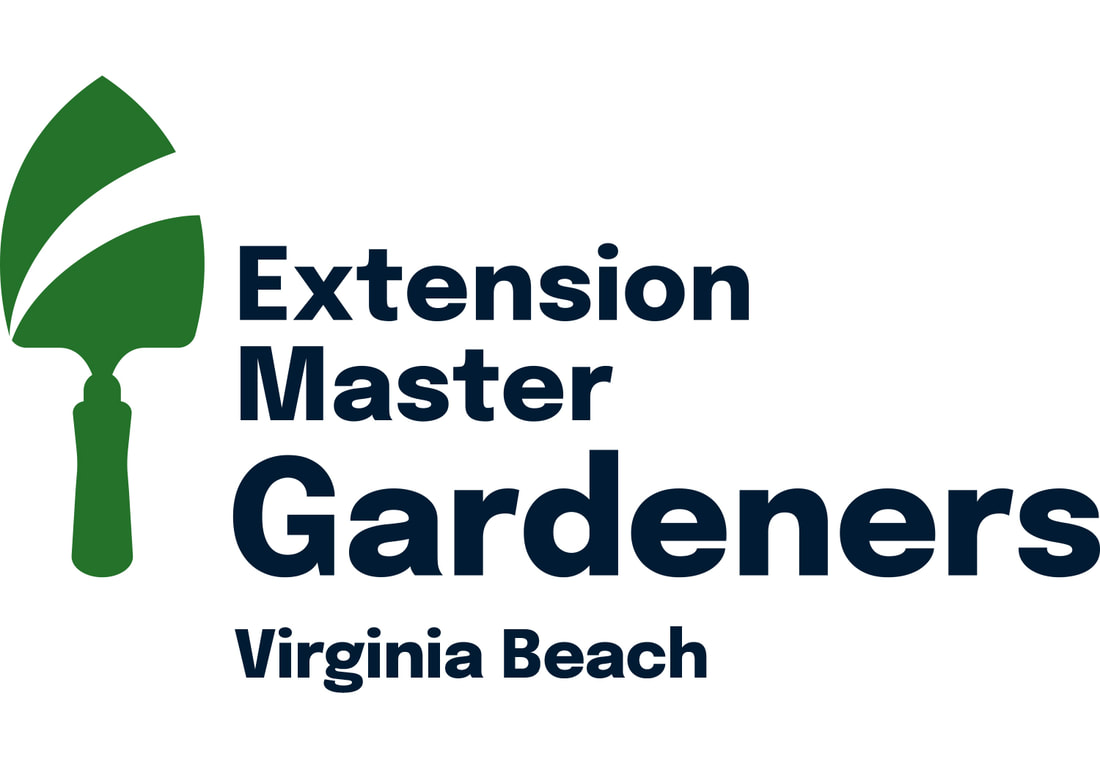Wildlife Habitat & Native Plants |
Resources |
 Monarch nectaring on native milkweed. Monarch nectaring on native milkweed.
Native plant appreciation is growing across the country, as the “backyard restoration” movement is making people more aware of the value of native plants to pollinators, birds, and other wildlife as well as their generally low maintenance requirements. Native plants are normally better suited to local soils and do not require as much care, pesticides or watering as introduced plants.
A yard with seventy percent or more native plants is needed to produce enough caterpillars for a breeding pair of songbirds. Native plants can be a plentiful source of insects and caterpillars while non-native plants usually produce none or very few. Native trees, such as oaks, can support as many as 534 species of caterpillars, the main food source for breeding songbirds. Grow plants that wildlife feed on normally
 Solidago/Goldenrod Solidago/Goldenrod
Plant:
Select plant varieties that have staggered fruit and seed production to allow for a continuous food supply when possible. Benefits to Wildlife
Butterflies common to Virginia Beach that benefit from native plants:
Many other animals also benefit from native/pollinator plants: moths, bees, wasps, beetles, flies, true bugs, grasshoppers and/or walking sticks, frogs, turtles, bats, fireflies and more!
Best practices for wildlife gardening: A diverse habitat supports greater wildlife diversity by supplying a variety of plant types, layers, and edges that provide cover from weather and predators, food resources and places to raise young. Habitat loss is the predominant factor adversely affecting wildlife populations today. To extend the availability of food, delay removing flower seed heads until early spring or grow a meadow garden that can be left relatively undisturbed for a season or more. Leave branches and twigs on the ground to provide nesting sites for bugs and insects. Avoid the use of pesticides whenever possible
Many of the pesticides that protect turf and ornamental plants from insects and diseases can kill pollinators when applied to actively flowering plants. Some insecticides not only kill insects on contact, but the plants can also take up the insecticide and distribute the chemical throughout its plant tissues. These “systemic” insecticides include neonicotinoids, the most widely used group.
Additional Methods of Alternative Pest Control Include:
If you decide to use a Pesticide, follow these tips to reduce risks to Beneficial Insects:
Pollinators can pick up neonicotinoids from treated plants by ingesting the following:
|

